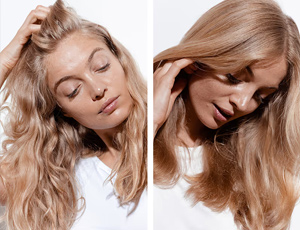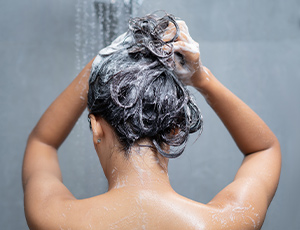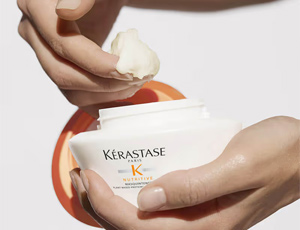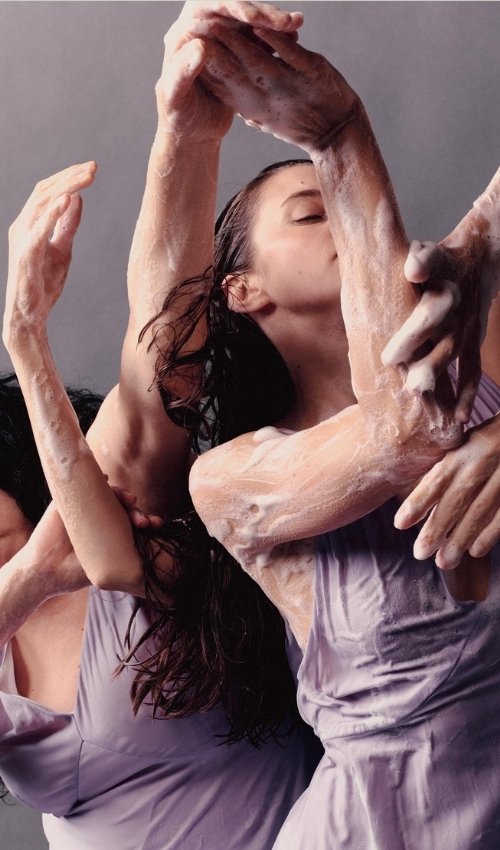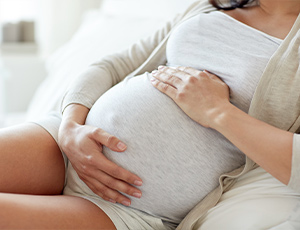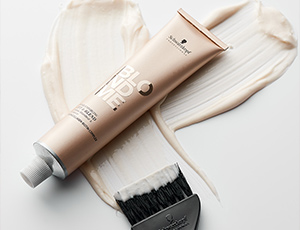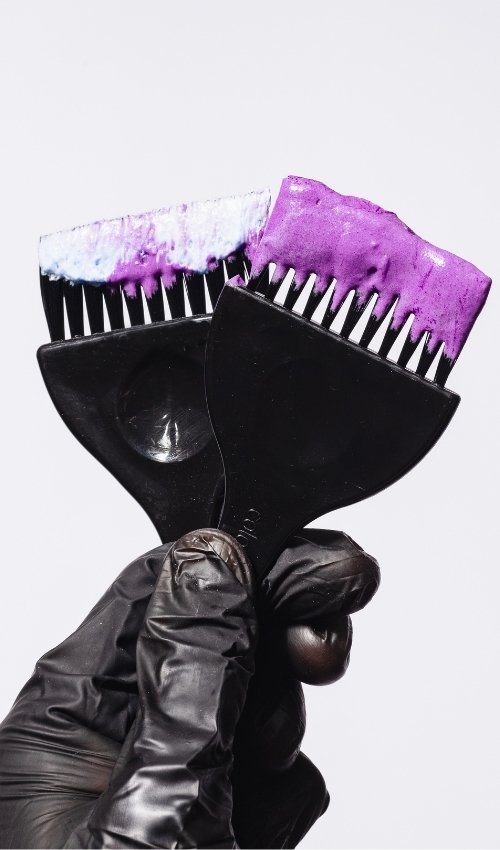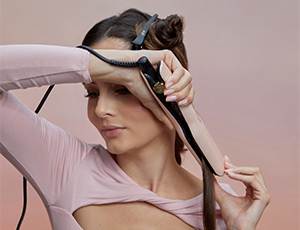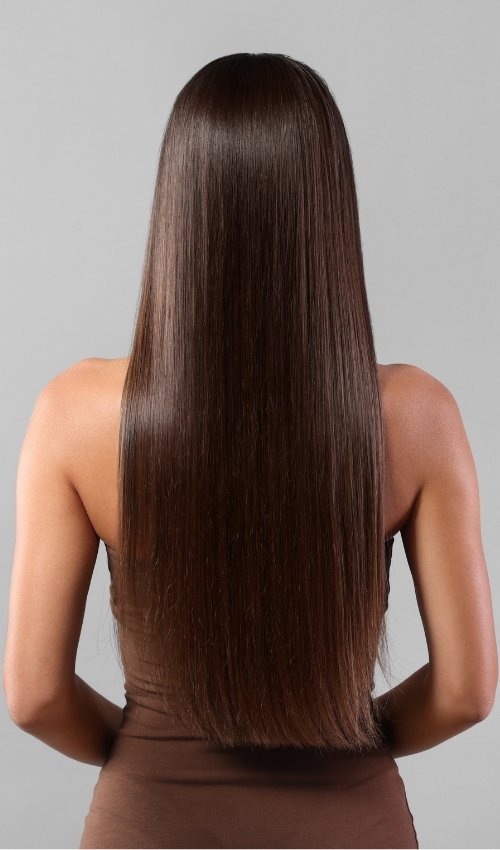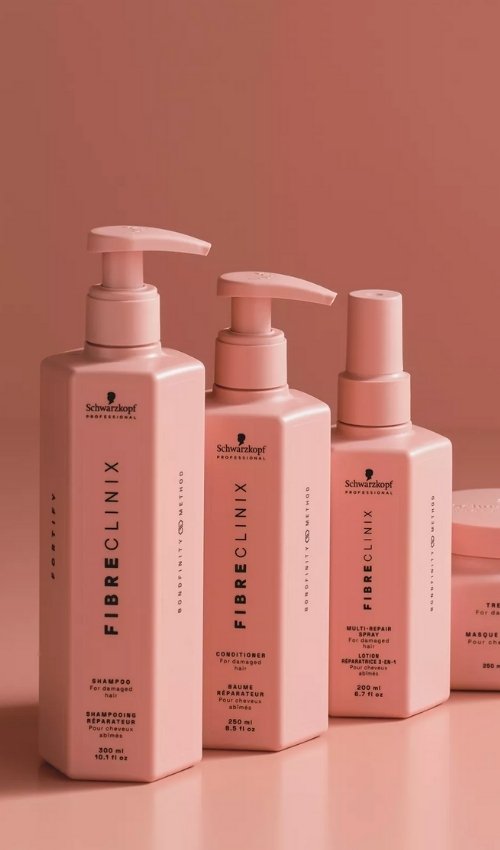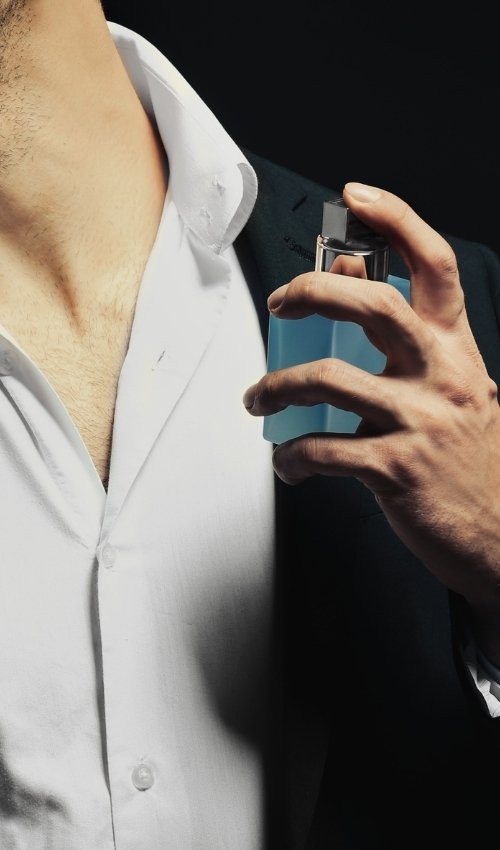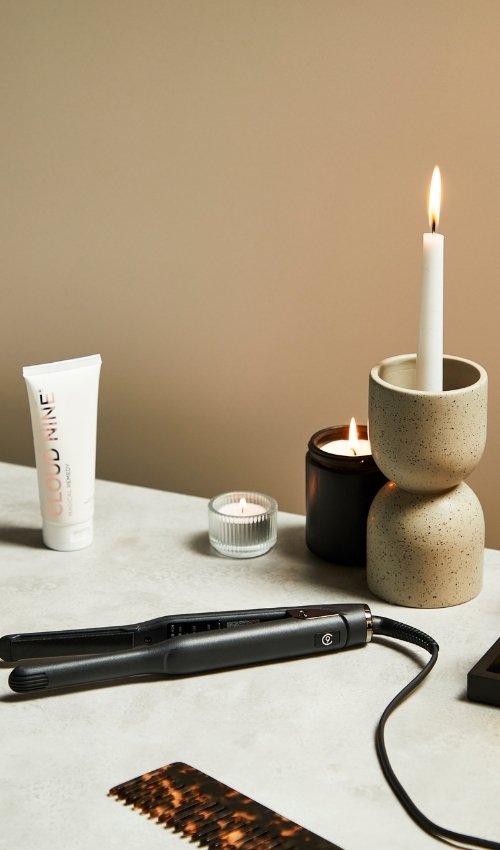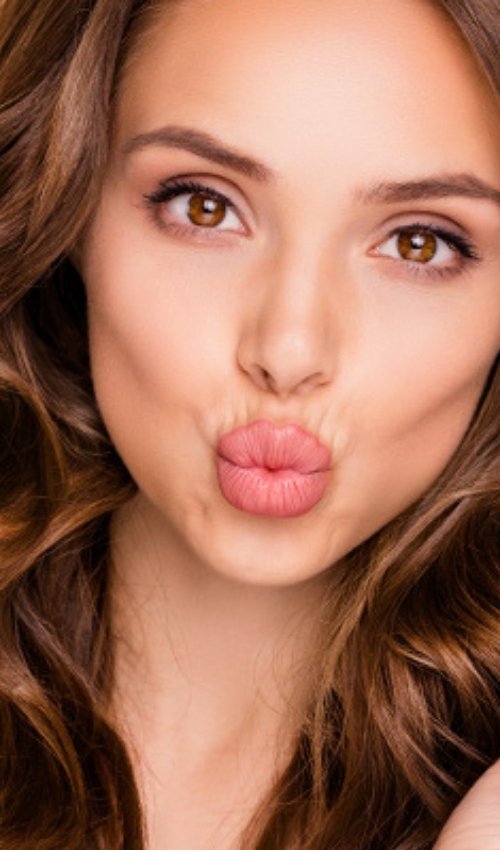Blonde is not a hair color — it’s a spectrum. From warm golden and caramel tones to silvery, icy white, everything is possible — and just when you think you’ve seen all the shades, the fashion industry introduces a new nuance. Time to pause: We’ll give you an overview of the 12 most beautiful shades of blonde.
Natural Blonde Shades from Ash to Strawberry
Ash Blonde: Goodbye “Mousy Brown”!
In the past, ash blonde hair was commonly referred to as “mousy brown.” Thankfully, those days are long gone, because ash blonde now boasts a range of advantages. It accentuates defined facial features, gives the wearer a confident appearance, and is just as easy to dye on blonde hair as it is on brown hair.

If you naturally have ash blonde hair, consider yourself lucky. You can enhance it even more with bold makeup and tousled boho waves, which perfectly complement the two-toned effect of your hair through their texture. If you want to dye your hair ash blonde, this tone works best for people with cool skin tones and rosy or olive undertones.
If your hair is naturally blonde, coloring it will be relatively easy. But even if you have naturally brown hair, you don’t necessarily need to bleach it to achieve trendy ash blonde. Instead, you can gradually lighten it by adding fine blonde highlights step by step. If you’re unsure about doing this yourself, visit a trusted hair salon and ask for professional help.
Wheat Blonde: The Warm Comeback of Dark Blonde
Dark blonde is out — wheat blonde is in. Fortunately, the two terms refer to the same color: with its summery warm undertone, classic dark blonde genuinely resembles the full ears of wheat fields. In 2023, this blonde hair color is especially popular when styled with a dark root and light balayage highlights.
Most often, dark blonde is a person’s natural hair color. However, it can also be dyed by people who naturally have darker hair. Lighter strands around the face or delicate babylights add a particularly interesting play of color. Even if you usually wear a lighter blonde tone, wheat blonde might be a great compromise: when winter darkens the hair, wheat blonde helps soften the harsh contrast.
Red Tones: From Strawberry Blonde to Copper Gold
Reddish blonde hair is characterized by a high amount of copper pigments, giving naturally blonde hair a reddish shimmer. This hair color is often naturally found in very fair skin types. If you want to dye your hair this color, keep in mind that red pigments are very small and tend to wash out quickly.

A softer, more delicate alternative to strawberry blonde is the trendy strawberry blonde. Depending on the color mix and the lighting, this tone can appear as anything from a warm orange to a cool rosé. It looks especially beautiful on people with rosy undertones and green or blue eyes.
If you like it a bit more striking, you can go for a radiant copper gold. This blonde shade is not a natural hair color, but it is closely related to strawberry blonde in its composition. The combination of red and blonde tones is refined with a soft, golden shimmer and — like all other red tones — pairs especially well with fair complexions.
Nordic Blonde: The Scandinavian Ice Queen Trend
Very few people are lucky enough to have white blonde hair naturally — but Scandinavians stand a good chance. Their natural hair color is often called Nordic Blonde or Scandi Blonde. Unlike cold platinum blonde, it features creamy, warm pearlescent nuances. When Nordic Blonde is dyed, targeted highlights are often added around the face or on the top layers of hair.
As the name suggests, Nordic Blonde suits people with cool complexions and light eye colors best. However, if you have a darker skin tone, you can still try the trend. By incorporating cool or warm undertones, the icy shade can be tailored to match your individual complexion.
If you’re not naturally Scandinavian and don’t already have Nordic Blonde hair, it’s best to have it dyed professionally. The risk of unwanted yellow tones is otherwise very high. Additionally, not every hair type is suited for such a light bleaching process, so a consultation with an expert is strongly recommended. As with platinum and grey blonde, you should always use an anti-yellowing spray and the right shampoos to keep unwanted tones out of your icy blonde mane.
From Honey to Caramel: The Best Blonde Shades for DIY
Honey Blonde: The Ultimate Warm Blonde
Honey blonde is the perfect example of warm blonde tones. It builds on very light hues with warm, beige undertones, creating a result that leans more toward orange or reddish hues rather than classic yellow. Based on the popularity of this color blend, the trend shade sunrise blonde was created in 2017. It visually resembles the rising sun and can be dyed on both naturally blonde and brown hair.
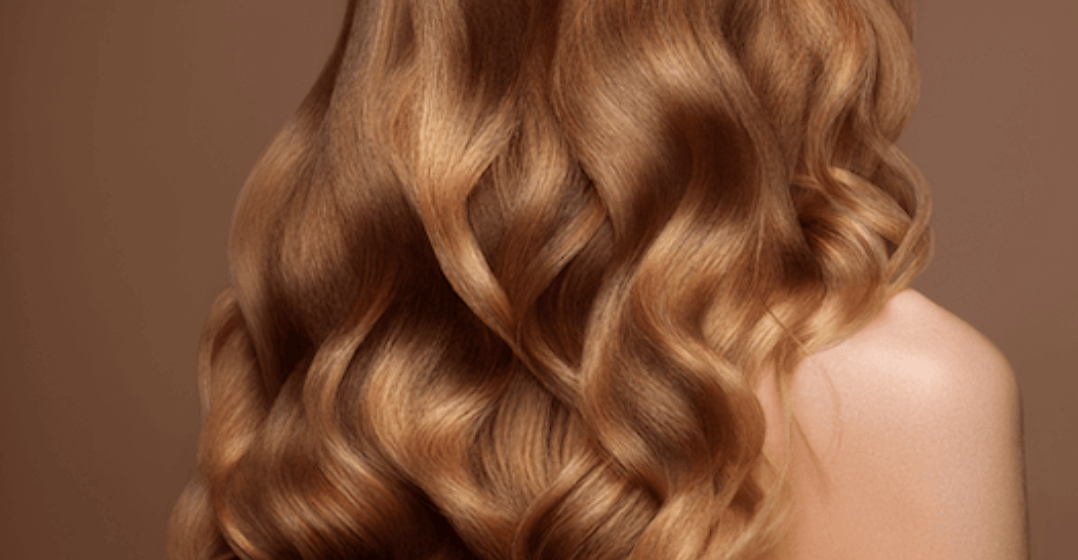
Honey blonde is considered a fairly neutral shade and flatters both cool and warm complexions. However, it looks particularly appealing in contrast to slightly tanned skin. If your skin has golden or olive undertones, honey blonde hair will highlight them perfectly. Be cautious if your skin leans toward bluish or rosy tones: in that case, make sure to adjust the honey blonde to your complexion by adding a cooler tint.
The biggest advantage of honey blonde hair: it doesn't necessarily require bleaching. Even if you have dark blonde or light brown hair, you can simply lighten it by a few shades to achieve a soft honey blonde. The final result is ideal for trying out color trends like balayage or color melting.
Golden Blonde: The Luxury Shade with an Ashy Undertone
Golden blonde describes a shiny blonde shade with yellowish tones that doesn’t go as far as brassy. It's often confused with honey blonde but stands apart due to its darker hue and slightly ashy base.
Thanks to its cool undertone, golden blonde is especially suitable for people with naturally porcelain-like skin. This hair color can visually counteract redness, which is often an issue with delicate but warm complexions. If you have a cool skin tone, consider mixing in beige tones to harmonize the look.
With golden shimmering highlights in various shades, you can achieve a fresh, natural golden blonde at home. If you're aiming for a livelier look, mix a cool blonde with warm golden tones for a contrast that will definitely draw attention to your hair. By the way: if you're naturally very light blonde, you can use henna to dye your hair golden blonde. It looks just as good as the chemical option but is much gentler on your hair.
Balayage Blonde: A Versatile Coloring Technique
Balayage is a technique where individual hair strands are hand-painted. To create a natural balayage blonde, you can either add blonde strands to dark hair or blend darker strands into naturally blonde hair. A good balayage lightens the natural hair color by no more than two shades. This results in a much more natural look compared to traditional foil techniques, which create strong contrasts between roots and ends.
If you're naturally blonde, a blonde balayage can bring a subtle yet noticeable change to your look. Depending on the desired tone, darker lowlights or lighter highlights can add new depth to your hair. People with naturally brown hair can also easily dye a blonde balayage.
You don’t necessarily need to go to a salon to achieve beautiful balayage blonde. With the right color kits, you can create highlights yourself — just make sure to have a friend help with the back of your head. A salon visit becomes essential only if you have very dark hair, as it will need significant lightening — something best left to professionals.
Caramel Blonde: Radiant Hair Without Bleaching
Caramel blonde relies on gold to copper nuances to create a gradient that almost resembles a natural balayage. The warm, richly shimmering look of caramel brown hair is perfect for spring and summer. These glowing, sun-kissed finishes offer a beautiful contrast to wintery chocolate browns.
Like golden blonde, caramel blonde suits people with warm skin tones especially well. Brown and blue eyes are particularly flattered by this warm, deep blonde tone. But even if you have a light, cool porcelain complexion, you don’t have to skip this trend shade: just ask your stylist to pick a cooler caramel tone for you.
If your hair is light blonde, you can dye it caramel blonde by choosing two to three darker blonde shades than your natural color. If your hair is more on the brown side, it will need to be lightened by a few levels. One great perk of caramel blonde: you can skip the hassle of frequent root touch-ups. The natural gradient includes a darker root and even darker lengths — the golden glow comes from delicate lowlights in the top layers of hair.
Time for the Salon! These Iconic Blondes Require Professional Help
Platinum Blonde: Gwen Stefani’s Iconic Statement Color
Platinum is one of the most striking blonde tones and is considered the contemporary version of classic peroxide blonde. The difference lies in the color temperature: peroxide blonde tends to appear warmer and more yellow, whereas platinum blonde leans on violet, gray, or silver pigments.
Platinum blonde is especially flattering for people with very fair complexions — even more so if your skin has a warm undertone. Slight facial redness, which is common in this case, is perfectly balanced by the silvery platinum shade. If you want to really showcase your platinum-dyed hair, bold eyebrows can provide a striking contrast.
Achieving true platinum blonde is no easy feat. That’s why you should leave bleaching and coloring to a professional salon. The stylist will first strip all pigment from your hair and then neutralize any remaining yellow tones to achieve the classic silver-white. Root touch-ups are frequently required. Due to the damaging nature of the bleaching process, your hair will also need extra care with sun protection and rich hair oils.
Silver and Gray Tones: Elegant and Icy
For several years now, silver blonde has been hugely on trend. The lightest, nearly white blonde shade gets a base tone that can range from light and dark gray to full-on silver. Blue or violet accents can also be added. This hair color is perfect for those with cool complexions.

If you already wear a short haircut or a bob, silver blonde is an excellent choice. Loose waves and geometric cuts also benefit from this trendy color. For those using this shade to cover gray hair, it’s essential to pair it with a fresh, flattering haircut. Otherwise, silver blonde might unintentionally create an aged appearance.
A variation of the silver trend is grey blonde, which combines dark gray roots with light blonde lengths. You can control the level of contrast yourself. A gradient using ashy tones creates a soft and smooth effect, while white hair with black roots offers a bold, confident contrast.
Vanilla Blonde: Creamy Hair with Frosty Accents
Vanilla blonde is similar to cool platinum blonde but has a slightly warmer base, making it appear more natural. The creamy tone leans toward ash blonde but adds frosty highlights, creating a harmonious blend of warm and cool hues. This effect really shines in sunlight—making vanilla blonde the perfect summer color.
Another advantage: Because vanilla blonde contains both warm and cool tones, it suits light and darker complexions alike. It’s also an ideal choice if you're starting to notice a few gray hairs, as vanilla blonde blends them away effortlessly.
Champagne Blonde: Lively and Sparkling Like Its Namesake
Champagne blonde is a unique tone. If you opt for this trendy shade, you’re choosing a pale peach-to-strawberry blonde base paired with golden and platinum highlights. The result is a delightful balance between cool and warm hues—elegant and effervescent, just like the drink it's named after.
Champagne blonde looks especially stunning on people with a fair complexion and cool undertones. The warm golden accents give the face a radiant, luminous glow.
To achieve an elegant champagne blonde, most hair types will need to be lightened first. Babylights can be added during the coloring process to give the hair more volume and dimension. To keep the color vibrant over time, you can use color-depositing care products that add a touch of pigment with every wash.
Conclusion: The 12 Most Beautiful Blonde Shades at a Glance
Thinking about going blonde? You can either try it yourself at home or consult a professional stylist. To help you decide, here’s a quick overview of our 12 favorite blonde shades.
Natural Hair Shades:
– Ash Blonde
– Wheat Blonde (Dark Blonde)
– Strawberry Blonde (Red Blonde, Copper Gold)
– Nordic Blonde (Scandi Blonde, Ice Blonde)
DIY-Friendly Blonde Shades:
– Honey Blonde
– Golden Blonde
– Balayage Blonde
– Caramel Blonde
Salon Blonde Shades:
– Platinum Blonde
– Silver Blonde (Grey Blonde)
– Vanilla Blonde
– Champagne Blonde



